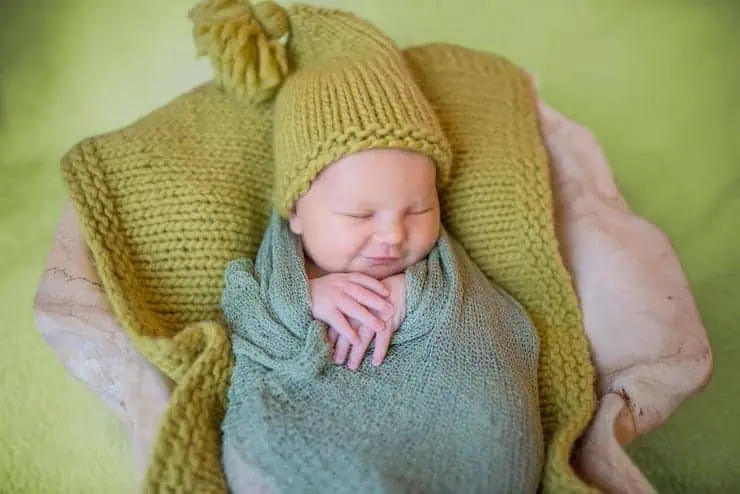How to Choose the Right Sleep Sack for Different Seasons and Temperatures
This post may contain affiliate links. As an Amazon Associate, I earn from qualifying purchases.
Choosing the right sleep sack for your baby is key to getting a restful night’s sleep in any season. Your baby’s sleep comfort can vary greatly depending on the sack’s temperature rating. Thus, it’s important you select a sleep sack that matches the season to keep them cozy without waking up overheated or chilled.
As a parent, where do you start with so many choices on the market? You can start by looking at temperature ratings. Understanding the various temperature ratings and how they apply to different seasons helps you make an informed choice.
In warmer months, lighter sleep sacks with higher temperature ratings offer comfort without overheating. For colder seasons, go for a sleeping sack for newborns with a lower temperature limit. This ensures they stay warm and snug even when temperatures drop. For your new baby, a specially designed sleep sack for newborns provides a safe and cozy environment.

Understanding TOG Ratings and Seasonal Sleep Sack Selection
TOG ratings help you choose the right sleep sack to keep your baby comfortable as the seasons and room temperatures change. It is essential to know how to select the appropriate TOG rating for different seasons to ensure your baby sleeps safely and soundly.
The Basics of TOG and Its Importance for Baby Sleep
TOG stands for Thermal Overall Grade. It measures how well a fabric insulates heat. Higher TOG ratings mean more warmth, while low TOG ratings indicate less insulation.
For example, a 1.0 TOG sleep sack provides moderate warmth and is suitable for rooms around 68-72°F. Understanding these ratings helps you ensure your baby is neither too hot nor too cold, which is important for safe sleep.
Choosing the Right Sleep Sack for Summer and Winter
In summer, when room temperatures are higher, you should opt for lower TOG ratings. A sleep sack with a 0.5 to 1.0 TOG is ideal for summer, keeping your baby cool and comfortable in a room that is 75°F or higher.
For winter, you need more insulation. A sleep sack with a 2.5 to 3.5 TOG is perfect for colder nights and room temperatures around 61-68°F. These sleep sacks provide the necessary warmth without the need for additional blankets, which can be unsafe for babies.
Transitioning Between Seasons: Spring and Fall Sleep Sack Options
Spring and fall can have fluctuating temperatures. During these seasons, choosing a versatile sleep sack with a 1.0 to 2.5 TOG rating works well. These sleep sacks are suitable for room temperatures between 68°F and 75°F and provide moderate insulation.
You can also adjust your baby’s clothing underneath the sleep sack based on how warm or cool it is. Layering with lighter fabrics in spring and slightly heavier ones in fall helps maintain the right level of warmth and minimize struggles with sleep regressions.
Features, Fabrics, and Safety of Sleep Sacks
Choosing the right sleep sack involves understanding the materials, design elements, and safety features to keep baby safe and asleep. The key aspects covered include the fabric types, ways to avoid overheating and suffocation risks, and practical features like zippers and sleeves.
Safe Sleepwear: Material and Design Considerations
When selecting a sleep sack, fabric choice is important. Cotton and organic cotton are popular for their softness and breathability. Bamboo fabric is another good option, known for being light and breathable. Merino wool is excellent for regulating temperature, making it suitable for both warm and cold seasons. Brands like Woolino create sleep sacks made from these materials, ensuring comfort and safety.
Consider the sleep sack’s design. It should fit snugly around the chest but be loose enough around the hips and legs. Properly sized armholes prevent the baby from slipping inside, which could pose a suffocation risk. Avoid sleep sacks with hoods or any elements that could cover your baby’s face.
Avoiding Overheating and Suffocation Risks
Overheating is a significant risk when using sleep sacks. To reduce this risk, choose a breathable fabric like cotton or bamboo. Look for sleep sacks with varying TOG ratings (thermal overall grade) to match different room temperatures. Lighter weights are ideal for warmer rooms, while heavier weights are better for cooler rooms.
Then, make sure the sleep sack fits well. A too-tight sleep sack can restrict movement and increase the risk of SIDS (sudden infant death syndrome). Conversely, a too-loose sleep sack can cover the face, leading to suffocation. Always check that the sleep sack isn’t too warm and that your baby doesn’t overheat, especially if layering is used.
Comfort and Practicality: Zippers, Sleeves, and More
Practical features like zippers and sleeves add convenience to sleep sacks. Look for sleep sacks with two-way zippers for easy diaper changes. This feature allows you to change your baby without fully removing the sleep sack.
Sleeves may be detachable, offering flexibility for different temperatures. Some sleep sacks can convert to a sleep suit, providing more options for your growing child. Ensure all closures are secure and that there are no loose parts.
Providing your baby with comfort means using soft, hypoallergenic materials and ensuring a good fit.

Temperature Matters
Choosing the right sleep sack involves considering temperature ratings, insulation types, and the seasons. Keep in mind that 1-season bags are best for warm conditions, while 5-season bags are suitable for extremely cold environments.
To improve your body’s sleep experience (and yours), pick a sleep sack that matches their nursery conditions. With the correct sleep sack, you can hopefully enjoy more comfortable and restful nights (fingers crossed!).







